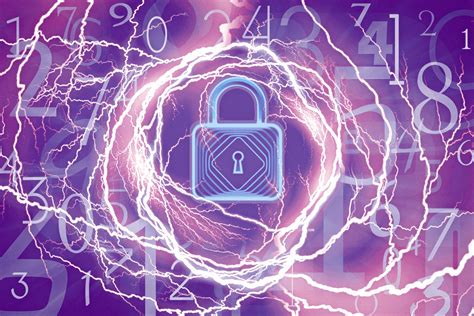In today’s hyper-connected digital age, where data flows ceaselessly across networks and every click can open a new vulnerability, cybersecurity isn’t merely an IT department’s concern; it’s the bedrock of our personal, professional, and national security. The phrase “stronger hosts” isn’t just a technical directive; it’s a profound call to action for every device, every server, every cloud instance, and ultimately, every individual connected to the internet. As cyber threats evolve with breathtaking speed and sophistication, the imperative to fortify our digital foundations—our hosts—becomes ever more critical. This comprehensive article will delve into the multifaceted nature of host security, exploring why robust defenses at the individual device and server level are paramount in the global fight against cybercrime. Understanding these vulnerabilities and implementing proactive strategies is crucial for safeguarding sensitive information, maintaining operational continuity, and, for content creators, generating high Google AdSense revenue by providing authoritative insights on a perpetually trending topic.
The Evolving Threat Landscape: Why Hosts Are Prime Targets
The digital realm is a constant battlefield, with adversaries ranging from lone wolf hackers and organized criminal syndicates to state-sponsored entities. Their motives are diverse: financial gain, intellectual property theft, espionage, political disruption, or simply notoriety. In this landscape, the “host”—be it a laptop, smartphone, server, or IoT device—represents the frontline. It’s often the initial point of compromise, the conduit for data exfiltration, or the launchpad for broader attacks.
Several factors contribute to the escalating importance of host security:
- Proliferation of Devices: The sheer number of internet-connected devices has exploded. Each new endpoint is a potential entry point for attackers.
- Remote Work Paradigm: The shift to widespread remote work has blurred network perimeters, pushing corporate assets onto less-controlled home networks.
- Supply Chain Attacks: Attackers increasingly target weaker links in the supply chain to compromise a stronger, primary target, often by exploiting vulnerabilities in software or hardware suppliers’ hosts.
- Sophistication of Malware: Modern malware can evade traditional defenses, persist on systems, and adapt to network changes.
- Human Element: Phishing, social engineering, and lack of security awareness often lead to initial host compromises.
- Data Volume: Hosts store and process unprecedented volumes of sensitive data, making them attractive targets for data breaches.
Neglecting host security is akin to building a magnificent fortress but leaving the front gate wide open. It renders all other network-level security measures significantly less effective.
Foundational Pillars of Strong Host Security
Effective host security is not a single solution but a layered, ongoing process built upon several foundational principles. Each pillar reinforces the others, creating a robust defense-in-depth strategy.
A. Endpoint Protection (Antivirus/EDR)
Antivirus software has evolved significantly from simple signature-based detection. Modern Endpoint Detection and Response (EDR) solutions are crucial for protecting individual devices.
- Behavioral Analysis: Instead of just looking for known malware signatures, EDR monitors system behavior for suspicious activities, such as unusual file access, process injection, or network connections. This helps detect zero-day exploits and polymorphic malware.
- Threat Intelligence Integration: EDR platforms leverage global threat intelligence feeds, allowing them to identify emerging threats and vulnerabilities in real-time.
- Automated Remediation: Advanced EDR can automatically isolate compromised devices, quarantine malicious files, and even roll back system changes, minimizing damage and reducing response times.
- Forensic Capabilities: EDR provides detailed logs and telemetry, essential for incident response teams to understand how a breach occurred and prevent future attacks.
- Centralized Management: For organizations, EDR solutions offer centralized dashboards to monitor, manage, and enforce security policies across all endpoints. This scalability is critical for large enterprises.
B. Patch Management and Vulnerability Assessment
Outdated software is one of the easiest ways for attackers to gain entry. Comprehensive patch management is non-negotiable for stronger hosts.
- Regular Patching: Continuously applying security updates, hotfixes, and patches for operating systems, applications, and firmware is paramount. Attackers actively scan for known vulnerabilities that remain unpatched.
- Automated Patching Tools: Utilizing tools that automate the discovery, testing, and deployment of patches reduces human error and ensures timely updates across numerous hosts.
- Vulnerability Scanning: Regularly scanning hosts for known vulnerabilities (misconfigurations, missing patches, weak passwords) provides a proactive measure to identify weaknesses before attackers do.
- Penetration Testing: Simulating real-world attacks against hosts to identify exploitable weaknesses and evaluate the effectiveness of existing security controls. This goes beyond mere scanning to test the resilience of the system.
- Dependency Management: For software development, managing and regularly updating third-party libraries and dependencies is crucial, as vulnerabilities in these components can expose the main application.
C. Strong Access Control and Authentication
Weak authentication is an open invitation for unauthorized access. Implementing robust access control mechanisms is fundamental.
- Least Privilege Principle: Users and processes should only be granted the minimum necessary access rights required to perform their specific tasks. This limits the blast radius of a compromised account.
- Multi-Factor Authentication (MFA): Requiring users to provide two or more verification factors (e.g., password + a code from a phone app, or fingerprint) significantly enhances security against credential theft.
- Strong Password Policies: Enforcing complex password requirements (length, mix of characters), preventing reuse, and regular rotation. Password managers are highly recommended for users.
- Role-Based Access Control (RBAC): Defining roles with specific permissions and assigning users to those roles, simplifying management and ensuring consistent access policies.
- Session Management: Securely managing user sessions, including timeouts and re-authentication, to prevent unauthorized access to open sessions.
- Privileged Access Management (PAM): Specifically managing and monitoring accounts with elevated privileges (e.g., administrator accounts) as these are prime targets for attackers.
D. Network Segmentation and Firewalling
While not exclusively “host” security, network segmentation directly impacts the security of hosts by limiting lateral movement in case of a breach.
- Internal Firewalls: Configuring host-based firewalls to control inbound and outbound network traffic, only allowing necessary connections.
- Network Segmentation (VLANs/Subnets): Dividing a network into smaller, isolated segments to contain breaches and prevent attackers from easily moving from one compromised host to others.
- Microsegmentation: Taking segmentation to an even finer grain, isolating individual workloads or applications within a data center or cloud environment. This dramatically limits lateral movement.
- Zero Trust Architecture: A security model where no user, device, or application is implicitly trusted, regardless of its location (inside or outside the network perimeter). Every access request is authenticated and authorized.
E. Data Encryption
Protecting data both at rest and in transit ensures confidentiality even if a host is compromised.
- Encryption at Rest: Encrypting data stored on hard drives, solid-state drives, and other storage media (e.g., using BitLocker, FileVault, or full disk encryption). This protects data if the device is lost or stolen.
- Encryption in Transit: Using secure protocols like HTTPS, SSL/TLS, and VPNs to encrypt data as it travels across networks, protecting it from eavesdropping.
- Database Encryption: Encrypting sensitive data fields within databases.
- Key Management: Securely managing encryption keys is critical. Compromised keys render encryption useless.
F. Security Configuration Management (Hardening)
Secure configuration involves hardening hosts by disabling unnecessary services, closing unused ports, and applying security best practices.
- Principle of Least Functionality: Only running essential services and applications on a host, minimizing the attack surface.
- Default Password Changes: Changing all default passwords on new devices and systems immediately.
- Security Baselines: Establishing and enforcing standardized security configurations (baselines) for all types of hosts, ensuring consistency and preventing misconfigurations.
- Regular Audits: Periodically auditing host configurations against established baselines to identify and correct deviations.
- Logging and Monitoring: Enabling comprehensive logging of security-relevant events on hosts and centralizing these logs for analysis.
The Human Element: Training and Awareness
Even the most technologically advanced host security measures can be undermined by human error or lack of awareness. The human element is often the weakest link in the cybersecurity chain.
A. Security Awareness Training
Regular and engaging training helps employees recognize threats and adopt secure behaviors.
- Phishing Simulations: Conducting simulated phishing attacks to test employee vigilance and provide immediate feedback.
- Social Engineering Education: Educating employees about common social engineering tactics (e.g., pretexting, baiting) used by attackers.
- Password Hygiene: Emphasizing the importance of strong, unique passwords and the use of password managers.
- Data Handling Policies: Training on how to securely handle sensitive data, including data classification and sharing protocols.
- Incident Reporting: Empowering employees to report suspicious activities without fear of reprisal, fostering a culture of security.
B. Incident Response and Recovery Planning
Despite robust defenses, breaches can occur. Having a well-defined incident response plan is crucial for minimizing damage and ensuring business continuity.
- Detection and Analysis: Establishing clear procedures for detecting security incidents and analyzing their scope and impact on hosts.
- Containment and Eradication: Steps to isolate compromised hosts, remove malicious software, and prevent further spread.
- Recovery and Post-Incident Review: Restoring affected hosts to normal operation and conducting a thorough review to identify root causes and improve future defenses.
- Regular Testing: Periodically testing the incident response plan through drills and simulations to ensure its effectiveness.
Advanced Strategies for Enterprise-Level Host Security

For larger organizations and those managing critical infrastructure, host security extends into more sophisticated realms, requiring specialized tools and expertise.
A. Application Whitelisting and Blacklisting
Controlling which applications are allowed to run on a host.
- Whitelisting: Only allowing explicitly approved applications to execute. This is highly secure but can be complex to manage in dynamic environments.
- Blacklisting: Preventing known malicious applications from running. Easier to implement but less secure than whitelisting as it relies on knowing what’s bad.
B. File Integrity Monitoring (FIM)
Monitoring critical system and application files for unauthorized modifications.
- Baseline Creation: Establishing a trusted baseline of file attributes (e.g., checksums, permissions) for critical files.
- Real-time Monitoring: Alerting administrators to any changes to these files, which could indicate a compromise or misconfiguration.
- Compliance: Often a requirement for regulatory compliance (e.g., PCI DSS, HIPAA).
C. Host-Based Intrusion Prevention Systems (HIPS)
Software that monitors system activities for malicious behavior and actively blocks or alerts on suspicious actions.
- Process Monitoring: Analyzing running processes for abnormal behavior.
- System Call Monitoring: Intercepting and analyzing system calls to detect attempts to exploit vulnerabilities.
- Policy Enforcement: Enforcing security policies at the host level, preventing unauthorized actions.
D. User and Entity Behavior Analytics (UEBA)
Leveraging machine learning to identify anomalous user or entity behavior that might indicate a security threat.
- Baseline Behavioral Profiles: Building profiles of normal user and device behavior over time.
- Anomaly Detection: Flagging deviations from these baselines (e.g., a user logging in from an unusual location, accessing sensitive files they don’t normally use) as potential threats.
- Insider Threat Detection: Particularly effective at identifying malicious insiders or compromised accounts.
E. Cloud Workload Protection Platforms (CWPP)
Specialized solutions for securing hosts (virtual machines, containers, serverless functions) in cloud environments.
- Visibility and Compliance: Providing comprehensive visibility into cloud workloads and ensuring they comply with security policies and regulatory requirements.
- Vulnerability Management: Scanning cloud instances for vulnerabilities and misconfigurations.
- Runtime Protection: Protecting workloads during execution from attacks.
- Container Security: Specific security measures for securing Docker containers and Kubernetes clusters, which are highly dynamic environments.
The Future of Host Security: AI, Automation, and Zero Trust
The landscape of cybersecurity is relentlessly evolving, driven by the ingenuity of attackers and the accelerating pace of digital transformation. The future of host security will be defined by greater automation, more sophisticated threat intelligence, and a fundamental shift in security paradigms.
A. AI and Machine Learning in Defense
AI and ML are transforming host security by enabling more intelligent and adaptive defenses.
- Predictive Threat Intelligence: AI can analyze vast datasets of threat indicators to predict emerging attack vectors and proactively harden hosts against them.
- Automated Anomaly Detection: ML algorithms are far superior at detecting subtle anomalies in host behavior that human analysts might miss, identifying zero-day threats or sophisticated persistent threats.
- Adaptive Security Policies: AI can dynamically adjust security policies on hosts based on real-time risk assessments, creating a more responsive defense.
- Autonomous Response: Future systems will leverage AI for autonomous remediation, allowing hosts to defend themselves against certain attacks without human intervention.
B. Continuous Verification and Zero Trust
The “trust no one, verify everything” mantra of Zero Trust will increasingly become the default for host security.
- Micro-segmentation Everywhere: Fine-grained segmentation will extend to every individual host and application, creating impenetrable perimeters around each asset.
- Continuous Authentication and Authorization: Users and devices will be continuously authenticated and authorized based on context (location, device health, time of day) rather than a single initial login.
- Device Posture Assessments: Hosts will undergo continuous assessments of their security posture (e.g., patched status, active security controls) before being granted access to resources.
C. Hardware-Level Security and Trusted Execution Environments
Security will increasingly be built into the hardware itself.
- Trusted Platform Modules (TPMs): Hardware-based security features (often found in modern CPUs) that provide secure boot, cryptographic keys, and integrity checks, making hosts more resistant to tampering.
- Secure Enclaves/Execution Environments: Isolated processing environments within the CPU that protect sensitive data and code even if the rest of the system is compromised (e.g., Intel SGX, ARM TrustZone).
- Measured Boot: Verifying the integrity of every component loaded during the boot process to ensure no malicious software has tampered with the system startup.
D. Integration and Orchestration
The complexity of managing disparate security tools will drive greater integration and automation.
- Security Orchestration, Automation, and Response (SOAR): Platforms that automate security workflows, integrating data from various security tools (including EDR, SIEM, vulnerability scanners) to accelerate incident response.
- Unified Security Platforms: Vendors will offer more comprehensive, integrated platforms that provide a holistic view and management of host, network, and cloud security.
The Unrelenting Imperative for Robust Host Defenses
In an era defined by pervasive digital connectivity and relentless cyber threats, the strength of our individual hosts forms the indispensable foundation of our collective cybersecurity posture. The notion that “cybersecurity demands stronger hosts” is not merely a technical suggestion; it is a fundamental truth that underpins the entire digital ecosystem. From the personal laptop to the mission-critical server in a data center, each endpoint represents a potential entry point for adversaries seeking to exploit vulnerabilities, exfiltrate sensitive data, or disrupt vital services.
By prioritizing and rigorously implementing the foundational pillars of host security—robust endpoint protection, meticulous patch management, stringent access controls, intelligent network segmentation, comprehensive data encryption, and secure configuration management—organizations and individuals can significantly elevate their defenses. Moreover, investing in the crucial human element through ongoing security awareness training empowers users to become active participants in their own protection. As threats grow more sophisticated, embracing advanced strategies like application whitelisting, file integrity monitoring, and cutting-edge behavioral analytics becomes increasingly vital for enterprise-level resilience. The future of host security will be defined by the transformative power of AI and machine learning, the pervasive adoption of Zero Trust principles, and the embedding of security directly into hardware. This continuous evolution in defense mechanisms is not just about reacting to threats but proactively building an impenetrable digital fortress from the ground up. Ultimately, a strong host isn’t just about protecting a device; it’s about safeguarding privacy, ensuring business continuity, preserving trust, and enabling the secure functioning of our increasingly digital world. The ongoing commitment to fortifying these digital sentinels is the unwavering imperative for navigating the complexities of tomorrow’s cyber landscape.








